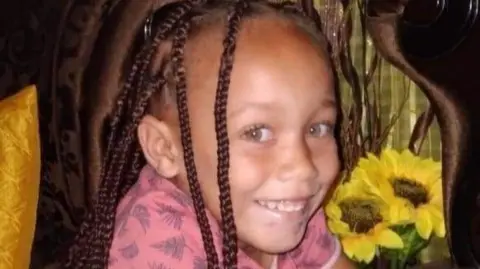In a deeply troubling case that has gripped South Africa, Kelly Smith, the mother of Joshlin Smith, has been convicted of kidnapping and trafficking her daughter, who mysteriously disappeared over a year ago. The case, which unfolded in Saldanha Bay, near Cape Town, has captivated the nation and raised serious concerns about child safety in the region.
Joshlin went missing in February of the previous year, and her disappearance sparked widespread public outcry, leading to a massive search operation. Sadly, despite the extensive efforts of authorities and volunteers, Joshlin has not been located. This has fueled speculation and fear within the community, emphasizing the vulnerability of children in South Africa, particularly in impoverished neighborhoods.
Kelly Smith, alongside her boyfriend Jacquen Appollis and their associate Steveno van Rhyn, was arrested following Joshlin’s disappearance. All three individuals were found guilty on Friday of the charges leveled against them. Initially, they had all pleaded not guilty, but the evidence presented during the trial ultimately led to their conviction. The developments in court were emotional, with Smith reportedly wiping tears as the verdict was delivered, while Van Rhyn exhibited a starkly contrasting demeanor, breaking into a smile.
During the trial—which was notably held at Saldanha’s Multipurpose Centre to allow for community access—prosecutors painted a grim picture of Smith’s actions, asserting that she had essentially “sold, delivered, or exchanged” her daughter. The courtroom was filled with emotional responses, as family members and community members expressed their horror at the situation. This case has especially resonated in South Africa, where child abductions and abuse remain critical issues.
One of the most shocking testimonies came from Lourentia Lombaard, a neighbor and friend of Smith, who testified against her during the trial. Lombaard claimed that Smith confessed to having perpetrated “something silly” and had allegedly sold Joshlin to a traditional healer, known colloquially as a “sangoma.” This particular accuser stated that the individual purportedly seeking Joshlin had sinister intentions, wanting her for her eyes and skin—an accusation that has sent ripples of fear throughout local communities.
The prosecution’s case was bolstered further by a local pastor, who revealed that he had overheard Smith discussing her willingness to sell her children, painting a picture of desperation and depravity. Testimonies from educators also included disturbing claims that Smith had informed them that Joshlin was “on a ship” en route to West Africa. Such allegations reflect a profound anxiety about the manipulation of children’s lives in dire circumstances.
In defense, Smith’s attorney, Rinesh Sivnarain, attempted to cast doubt on the credibility of the witnesses, suggesting inconsistencies in their testimonies. However, the failure of the defendants to testify in their own defense has left many questioning their side of the story. Amidst the allegations, there is also a discussion about the traditional practices in South Africa, where sangomas are legally recognized for their cultural significance, yet the mention of body parts in traditional healing practices has evoked fear in many.
Joshlin’s case illustrates the harsh realities faced by children within vulnerable communities. As parents in her neighborhood of Middelpos express lingering fears for their children’s safety, the conviction of Smith and her accomplices should serve as a clarion call to address the issues of child safety and welfare in South Africa. The societal implications of this case extend beyond the courtroom, highlighting a need for comprehensive measures to protect children from exploitation and abuse, especially in areas that are economically disadvantaged.
The story of Joshlin Smith, although tragic, may be a pivotal moment for discussions on the rights and protections afforded to children nationwide. It raises essential questions about societal responsibilities toward vulnerable families and the support systems that must be put in place to prevent similar occurrences in the future.



